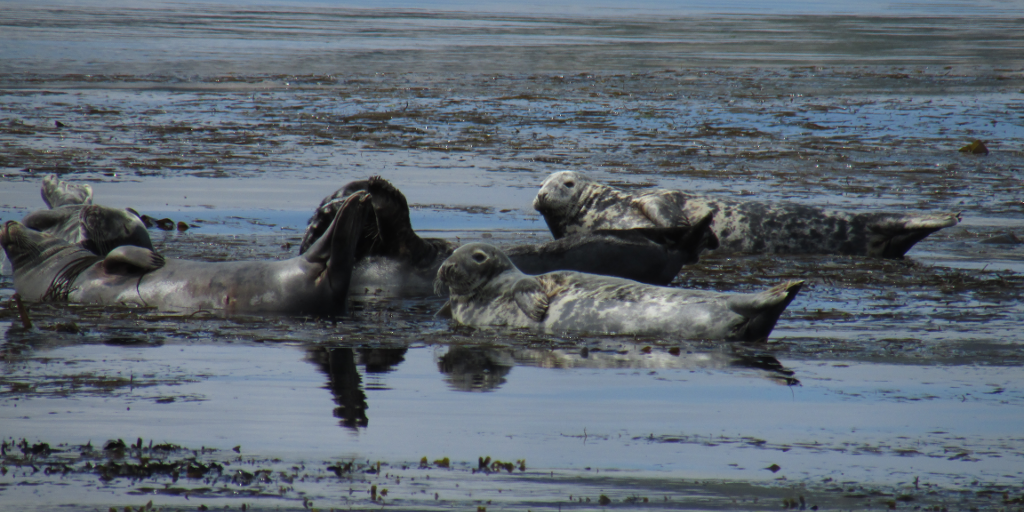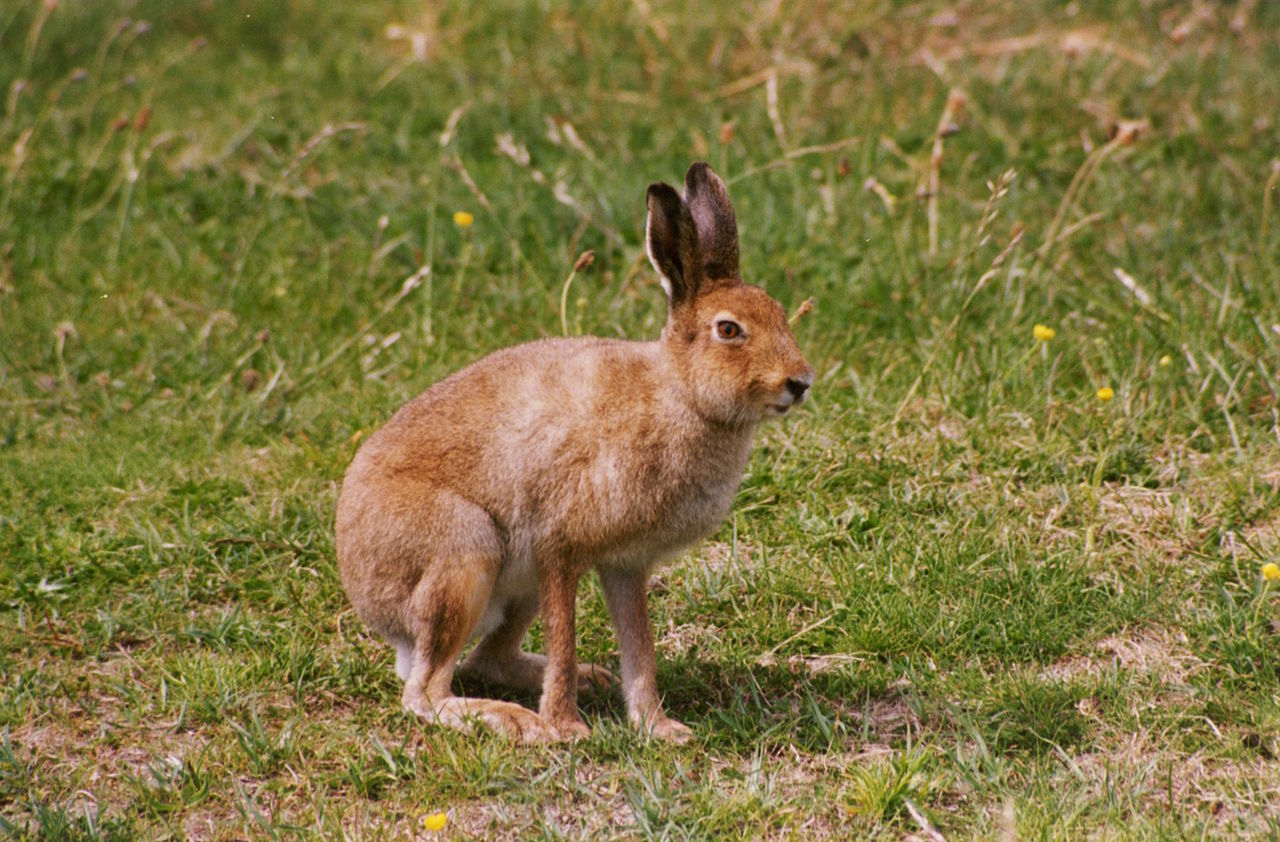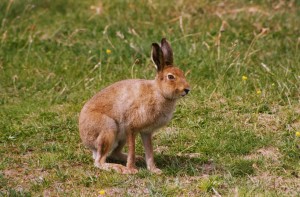For decades, Irish fishermen have called for Irish seals to be culled. The call for a seal cull has been made especially vociferously in the west of the country, and has been brought into the national discussion when backed by politicians and highlighted by illegal acts of violence against seals. Just weeks ago, Michael Healy-Rae, Independent TD for Kerry, was in the media demanding a cull. Though many people perceive seals to compete with fishermen, any impact on fisheries is not well supported by the research. Studies have found that seals do not generally compete for the same fish resources as fishermen, and modelling has indicated that the presence or absence of seals has little impact on fisheries catches.
Continue reading “Is a seal cull needed to protect fish stocks?”The world economy in a cube
In 1884, the English theologian and pedagogue Edwin A. Abbott wrote a romance called “Flatland”, in which he described a two dimensional world. The rigid and hierarchically organized society of Flatland develops in the large plane in which it lives, and flat authorities control that no flat citizen (the inhabitants are all flat geometric figures) escapes from the two-dimension reality. The book is a social satire as well as an exploration of the concept of multiple dimensions. Furthermore, it can also be viewed as a critic of narrow worldviews stubbornly based on old paradigms.
The novel’s example can be used to argue that despite the proliferation of metrics, our decision making process tends to be guided by the quasi-imposed limited set of information tools – mainly economic – that we use every day. In other words, concepts like Earth System, Planetary boundaries or biophysical limits, environmental sustainability, social welfare and other important elements of our life on this planet are not satisfactorily incorporated in our knowledge horizon.
The current economic worldview is based on the idea that a free market works for the 100% of the population. Thus, economic growth (as measured by growth in GDP) is the political mantra: “the rising tide that lifts all boats”. A recent study published on Global Environmental Change (available here) gives a different point of view by including the environment and the society in the economic picture.
National economies are investigated in a 3-axis diagram (a cube), where each dimension is a different compartment. In this way, the relationships between environment, society and economy are represented in a single framework without losing the specific information. This framework recognizes a physical (and also thermodynamic, and logical) order, highlighting the dependence of the economy on societal organization and, primarily, on the environment.
From this three-dimensional perspective emerges that the economic activity is always strictly correlated with the use of natural resources, and that social well-being is often neglected. Over a total number of 99 national economies investigated within the cube, none of them is at the same time environmentally sustainable, economically rich (high GDP), and equal in the distribution of income.
This means that growing GDP is beneficial for a limited fraction of the overall population, while the vast majority has to deal with increasing environmental problems and worsening ecological status. Moreover, decoupling economic growth and natural resources consumption, seeking the so-called dematerialization, is found very complicated. Continuous growth in GDP implies consequences especially for the poorest individuals and communities: “the rising tide is lifting the yachts and swamping the rowboats” (Dietz and O’Neill, 2013).
Politicians are looking at the world around as a mono-dimensional economic universe. This is due to the fact that economists play a relevant role within governments. We need ecologists and social scientists playing an equally relevant role, in order to finally show politics we live in a three-dimensional world.
Author: Luca Coscieme, @lucacoscieme
REFERENCES
F.M. Pulselli, L. Coscieme, L. Neri, A. Regoli, P.C. Sutton, A. Lemmi, S. Bastianoni, “The world economy in a cube: A more rational structural representation of sustainability”; Global Environmental Change 35, 41-51, 2015 (doi:10.1016/j.gloenvcha.2015.08.002)
Dietz and D. O’Neill, “Enough is Enough”; London: Earthscan, 2013.
Link: http://www.sciencedirect.com/science/article/pii/S0959378015300236
Image Credits: www.downbox.org, catalog.lambertvillelibrary.org
Coursing conundrum
At first glance, many scientific ideas can appear counterintuitive. A press release from a leading Irish wildlife charity in support of the proposed coursing ban prompted me to attempt to balance the discussion of coursing impacts on the Irish hare population. The bill to ban coursing is due to come before the Dáil in the coming months. However, the above press release immediately struck me as biased, and so I felt a discussion of coursing impacts was required before the public were asked to sign any petitions in support of this ban. For those unsure of just what coursing is, it is a popular field sport which consists of a hare being chased by a pair of greyhounds over a short distance. Unlike fox and deer hunting, the aim of coursing is not to kill the hare. It is instead a speed and agility competition between two dogs, where each is awarded points depending on its ability to “turn” the hare from a direct route along the field. Irish hares (Lepus timidus hibernicus Bell 1837) are caught and held in captivity prior to an event during which the hare is coursed within an enclosed park. A running hare is given a 75m head start before the release of two dogs, whose performance is assessed by a judge, and surviving hares escape into an area from which the dogs are excluded. The duration of the pursuit is relatively brief, usually lasting less than a minute, and surviving hares are returned to the wild after the event.
The IWT states something which a few of us may agree with; that Ireland is lagging behind in terms of its attitude to welfare and conservation of native wildlife. However, the idea that a coursing ban would in some way improve this status is highly questionable. Welfare issues need to be taken into account, but these considerations must be viewed in parallel with the beneficial aspects of coursing, such as habitat conservation and the associated protection of both target and non-target species, before any final judgements regarding coursing acceptability can be made. It is perhaps unintuitive, but evidence indicates that coursing has an extremely large positive impact on hare numbers. Mortality of coursed hares stands at just 4.1% since the implementation of dog muzzling in 1993, and research has found coursing to have negligible impacts on hare populations due their large intrinsic rates of increase. People who participate in coursing maximise hare populations in coursing preserves through predator control and set aside to conserve habitat suited to the Irish hare. In fact, it is agricultural intensification (an issue completely ignored in the IWT article) which is more likely to blame for population declines. Habitat management to encourage target species for hunting can protect against the detrimental effects of modern agricultural policy on biodiversity. Irish Coursing Club preserves host a hare density 3 times greater than that supported by the wider countryside. What is more probable is that coursing is actually stemming the tide of anthropogenic destruction of many species our native wildlife (including corncrakes and many other farmland bird species) through habitat conservation aimed at artificially increasing hare populations for coursing. If coursing were to be banned in this country, this practice would be completely abandoned due to waning interest in encouraging hare numbers, and could potentially have serious ramifications for other wildlife which benefit from associated habitat management and predator control. Incentives to promote hare conservation would be required, but it’s questionable whether these would produce the same results as coursing-associated management due to a lack of personal interest for farmers and other landowners who practice coursing. Hare conservation in the absence of coursing, similar to that of other species benefiting from game management, would be a costly endeavour and would be unlikely to be awarded the necessary funding in the Republic of Ireland with the current economic climate.
We have the opportunity to be forward-thinking, innovative and inclusive in the way in which we achieve sustainable conservation of our native wildlife, something which appears all the more important in light of the EU agricultural policy reforms which were leaked in recent days. We can only hope that a review of the research will stop the Dáil bowing to ill-informed political pressure and perhaps, the future of farmland birds and our only endemic mammal, the Irish hare, will be ensured.
Author
Emma Murphy: butlere1[at]
Photo credit
wikimedia commons





